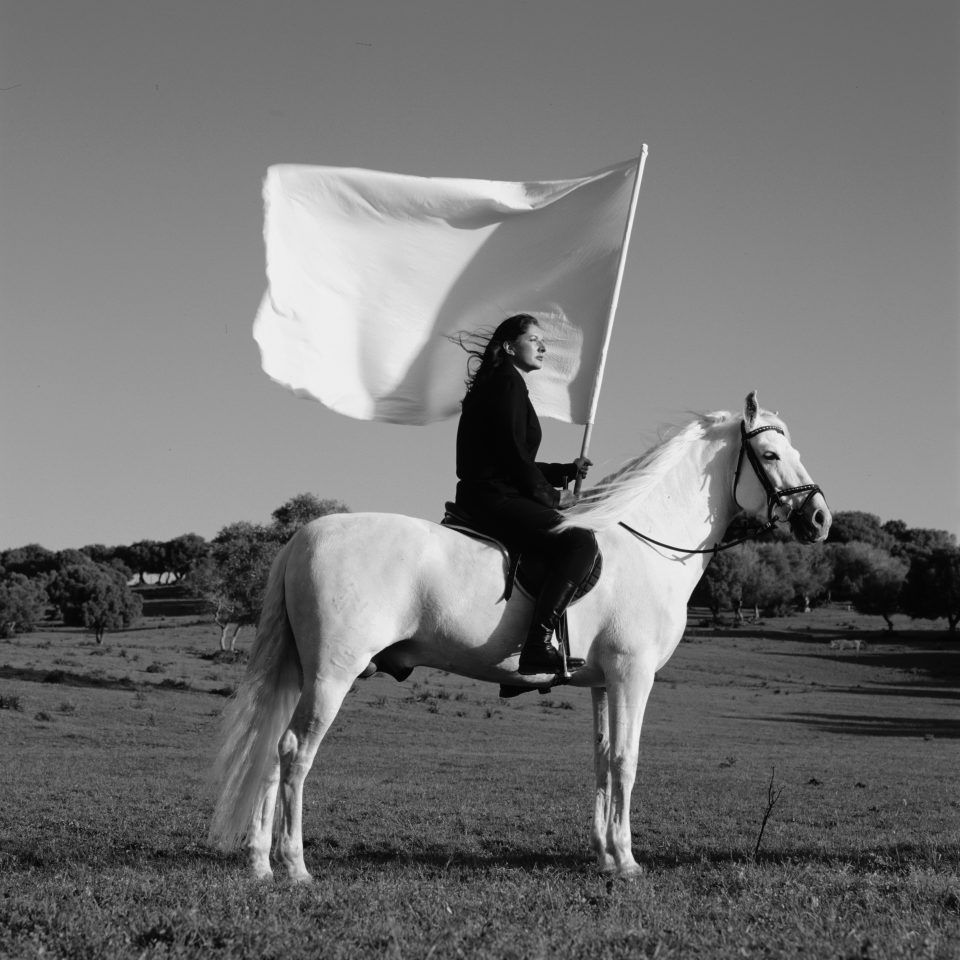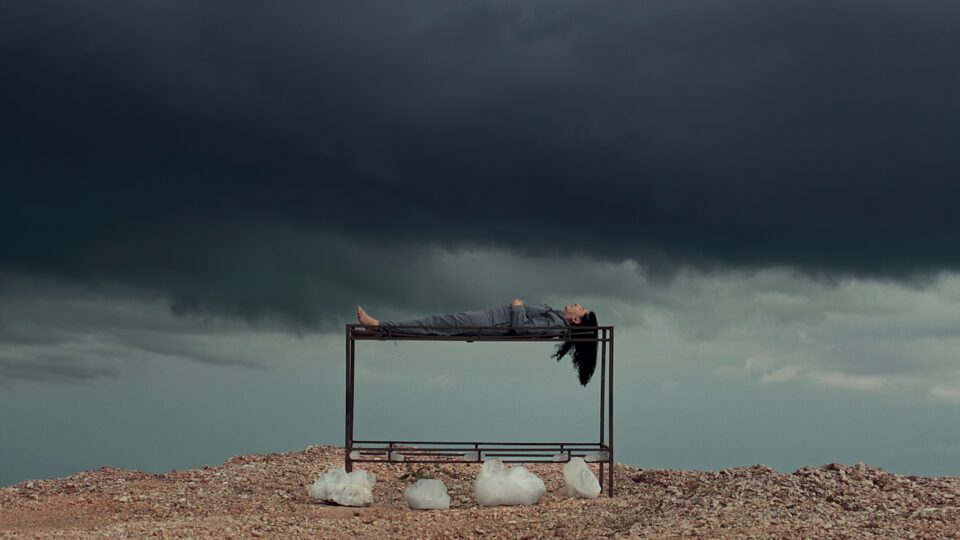Marina Abramović (b. 1946) is famed for pioneering performance art, pushing her body to the limits to engage with pressing social and political issues. This autumn, the Royal Academy of Arts, London, will present the first major UK survey of the internationally acclaimed Serbian artist and Honorary Royal Academician. The exhibition, arranged in close collaboration with Abramović, will survey her extraordinary practice over five decades. Key installations, objects and videos are linked by a series of shared themes, including “Public Participation”, “The Communist Body” and “Body Limits”. Four pieces – Imponderabilia (1977), Nude with Skeleton (2002), Luminosity (1997) and The House with the Ocean View (2002) – will be performed live across the gallery by a new generation of practitioners taught by Abramović.
Originally trained as a painter, Abramović turned to performance in the early 1970s. During this time, she established the hallmark of her practice: ritualising everyday actions through repetition and endurance. Her body became the medium, and she consistently tested its physical and mental tolerance. Rhythm 0 (1974) is a famous example. Set in Studio Morra, Naples, 72 objects – from an apple and a rosemary branch to a needle and a gun – were offered to the audience to be used “on [Abramović] as desired”. The public held no responsibility for their actions over the six-hour duration. She relinquished control completely, enabling strangers to become active participants in the artwork. Some engaged curiously whilst others “responded with vicious intent, marking, probing and scratching her, blindfolding her, dousing her with cold water and pinning slogans to her skin.” The height of Abramović’s vulnerability was when a man pressed a loaded gun to her head. In a Guardian interview over 30 years later, she states: “I realised then that the public can kill you. If you give them total freedom, they will become frenzied enough to kill you.”

Performance art can often confront us with our own mortality, whether as artist or audience. One section of the exhibition, titled “Coming and Going”, displays Abramović’s engagement with this theme. Nude with Skeleton (2002) is inspired by a practice where Tibetan monks sleep alongside the deceased to understand the process of death. The artist reinterprets the experience in the gallery by lying beneath a replica skeleton, animating its bones with her own breathing. Abramović connects art, death and life through her body. Research into different cultures has deepened her interest into how feats of physical endurance give way to a mental leap of faith – enabling one to transcend the limitations of the body. She explains: “I call it liquid knowledge. When the body is exhausted you reach a point where the body doesn’t exist anymore. Your connection with a universal knowledge is so acute, there is a state of luminosity.”
Abramović’s range is astounding, as she continually explores new ways to engage with the public. In another part of the show, two pieces – Rhythm 0 (1975) and The Artist is Present (2010) – are brought together from opposite ends of a 45-year span. They show how her interest in direct audience interaction has developed over time. In the latter, strangers take a seat facing the artist at a wooden table. They gaze into each other’s eyes in complete silence, each devoting time to an intimate moment of connection. The RA is set to re-stage the iconic piece through archival footage of the original performance at the Museum of Modern Art, New York. Around 850,000 gallery-goers participated in this simple act of mutual looking and her ex-partner, the German artist Ulay (1943-2020), was one of them . They had not spoken for more than 20 years and the shock of his surprise appearance gave way to a moving conversation where they “shared so much without ever saying a word”. This silent intimacy with eyes familiar and unknown, stands in stark contrast to the violence of Rhythm 0. From radical physical interaction to quiet stillness, Abramovic breaches the usual barriers between artist and audiences – to drastically different outcomes.

From 1975–1988, Abramović explored the relationship between men and women through a series of collaborative pieces with her then partner Ulay. At the RA, “Body Limits” brings attendees back to these early years with a series of videos and photographs. The couple take centre stage in Imponderabilia (1977), standing naked on either side of a doorway leading into a gallery space. They are, as Abramović names, “living doors” for visitors to side-step through. It is an investigation into the split-second decisions governing our interactions with other people. The next part of the exhibition, called “Absence of the Body”, focuses on the couple’s break-up. It was originally conceived as a declaration of their marriage but, through the breakdown of their relationship, ended up marking their divorce. Ultimately, The Lovers, The Great Wall Walk (1988) explores separation on a grand scale. The artists walked for 90 days over 5995 km across the Great Wall of China from opposite ends – meeting briefly before splitting once more.
Abramović remains dedicated to surpassing the limits of art. From being received as “scandalous” by early newspapers, the power of her work is globally recognised and celebrated today. Her recent work includes Rising (2019), a virtual reality (VR) avatar performance engaging with the climate emergency and an opera written 2020 titled 7 Deaths of Maria Callas and The Hero 25fps (2022). The last one shows her holding a white flag whilst sat atop a stationary white horse. It was her first NFT project, and is a reference to one of her earlier pieces titled The Hero (2001). Abramović peels away expected social behaviour – revealing realities that are sometimes horrifying, sometimes heart-warming, but always captivating.
Royal Academy of Arts, London: Marina Abramović | 23 September 2023 – 1 January 2024
Words: Diana Bestwish Tetteh
Image Credits:
- Marina Abramović, The Artist is Present, 2010. Performance; 3 months. The Museum of Modern Art, New York. Courtesy of the Marina Abramović Archives. © Marina Abramović. Photo: Marco Anelli
- Marina Abramović, The Hero, 2001. Single Channel Video (black and white, sound); 14 minutes, 19 seconds. Courtesy of the Marina Abramović Archives. © Marina Abramović
- Marina Abramović, The Current, 2017. Video; 1 hour 35 mins. Courtesy of the Marina Abramović Archives. © Marina Abramović
- Marina Abramović, Rhythm 0, 1974. Performance; 6 hours. Studio Morra, Naples. Courtesy of the Marina Abramović Archives. © Marina Abramović. Photo: Donatelli Sbarra
The post Revelatory Performances appeared first on Aesthetica Magazine.

